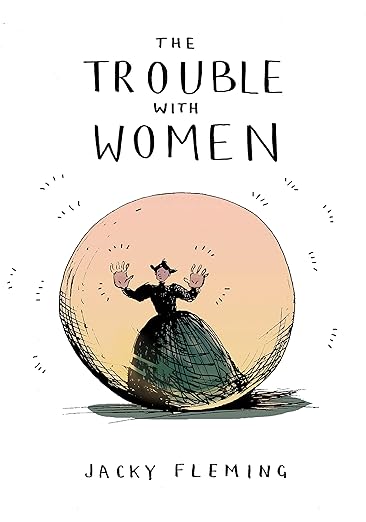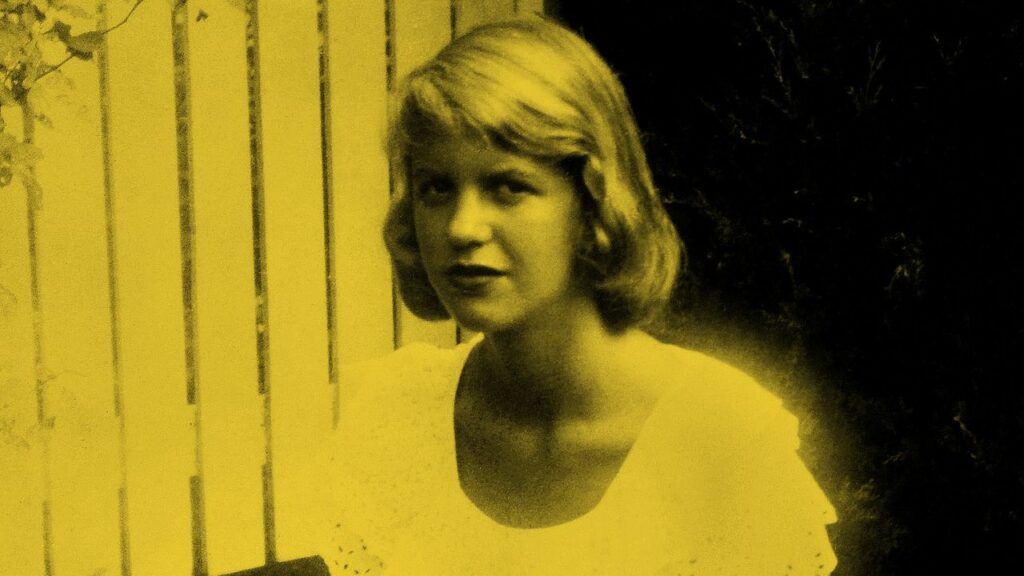In her essay Women and Madness Phyllis Chesler writes, “Madness is shut away from sight, shamed, brutalised, denied and feared,” as she questions the motifs of insanity that have emerged as the hallmark of the female sex. Whether it is Brontë’s Bertha Mason locked in an attic of her own or Rossetti’s Laura who is lured by the tempting goblins and loses her maiden desirability, a woman transgressing the gender stereotypes of her age automatically acquires the adage of ‘The Madwoman,’ who is isolated, violated and left to degenerate.
The dynamics of shame and humiliation aid the patriarchal heteronormative society to maintain its fascist order. In A Literature of Their Own, Elaine Showalter talks about the inability of women to organise themselves as a solidified unit against male oppression which has led to the perpetuation of the man/woman binary for centuries. But the idea of binaries brings us to the need to examine why such rigid boundaries exist in the first place.
Being prisoners of performativity
Building on Judith Butler’s idea of gender performativity, we are merely assigned a sex at birth, but our femininity and masculinity are performative aspects of our gender that are societally constructed. Adrienne Rich has given the term “compulsory heterosexuality,” as she explains how most women do not get a choice, “heterosexuality may not be a preference at all but something that has had to be imposed, managed, organised, propagandised and maintained by force.”
In the face of such fascist oppression, women have been exposed to manipulated narratives from various pillars of religion, law, and medicine because the ruling centre has been dominated by a patriarchal figure, leaving the woman as ‘The Second Sex,’ who is constantly being ‘Othered’.
Literary canons have been dominated by male philosophers and poets, however, we hardly consider that these established men are the tip of the iceberg meanwhile a woman is left shackled to the domestic sphere to deal with their whims and fancies as she ensures that the entirety of the iceberg residing under the ocean does not collapse.
The humorous approach
In her humorous yet eye-opening graphic novel The Trouble with Women Jacky Fleming uses baffling theories about women that have been left behind by some of the greatest geniuses of our time, like Jean Jacques Rousseau asserting that the only role of women was to please men. In a rich blend of satire and comedy, the book exquisitely highlights the formation of Foucauldian power relations, where the narratives strewn together by the patriarchal culture transform into legitimate justifications to police women’s bodies, aspirations, sexualities and mental health.

Fleming illustrates women retrieving themselves from a ‘Dustbin of History,’ which resonates with a major focus in recent years on documenting the lost feminist history and relocating the women writers that have been subsumed under a dominating canon.
Breaking the walls of protection
Charlotte Perkins Gilman in The Yellow Wallpaper has written a protagonist whose post-natal depression degenerates into psychosis because despite repeated appeals for being allowed to move, write and do healthy work she is confined to a room for her ‘own benefit,’ by her physician husband John.

There is a focus on the protagonist telling herself, “I must not think about it,” which shows the walls patriarchy constructs around women’s mental health. In the end, she becomes part of the wallpaper and we are left wondering if not every woman feels like a creeping shadow living behind a hideous yellow wallpaper.
Is the immense lack of mental health awareness for women linked to the erasure of their identity by blurring their self-referentiality and making them mothers, sisters, wives, daughters, and other that exists to assert the superiority of the dominant sex?
Does not every woman feel the claustrophobia and suffocation of being sold in ill-fitted marriages as legalised sex workers and imprisoned in performative stereotypes that leave them no room for a self-identity? Is the immense lack of mental health awareness for women linked to the erasure of their identity by blurring their self-referentiality and making them mothers, sisters, wives, daughters, and other that exists to assert the superiority of the dominant sex?
Gilman gives no name to her protagonist which universalises this nineteenth-century woman to any woman even in modern times whose post-partum depression is not taken into account with the required degree of seriousness, while it can also resemble any woman who is asphyxiated by the gender stereotypes that crush her freedom.
Mental health Inside the chamber of confusion
The Bell Jar by Sylvia Plath is a seminal text to understand the disillusionment and stigma people have associated with mental health for decades, especially if it is a woman in question. Through the story of Esther Greenwood, with several elements drawn from an autobiographical aspect, we meet a woman in 1950s America and witness her spiral into depression as the expectations of her environment crumble over her eventually. However, the book also documents the highly stigmatised way mental health was treated at the time with lobotomy still being legal, and patients prescribed to undergo shock therapy.

Esther’s mental health is time and again treated like an invention of her mind, her mother seems to think it is a bug that Esther has planted in her head herself, one she can remove voluntarily. However, as readers we are aware what Esther is undergoing are symptoms of depression. Her doctors betray her trust and even as the novel ends Esther is only left in a state of confusion as she says, “I had hoped, at my departure, I would feel sure and knowledgeable about everything that lay ahead – after all, I had been ‘analyzed’. Instead, all I could see were question marks… … I thought, to be a ritual for being born twice – patched, retreaded and approved for the road.“
Entering a Non-Conformist’s den
A recent addition to the ‘Madwoman,’ lineage is the 2018 published novel My Year of Rest by American author Ottessa Moshfegh who says it’s an attempt to showcase “how reasonable, even necessary, alienation can be,” to “duck the ills,” of the world. The speaker is an unlikeable woman, left orphaned by two emotionally unavailable parents to a monstrous inheritance.
At twenty-four years old, she feels detached from her reality and nothing, not even the cycle of time and changing seasons, affects her anymore. She truly believes that her hibernation is not suicidal but one meant for self-preservation as she says, “I felt nothing. I could think of feelings and emotions, but I couldn’t bring them up in me. I couldn’t even locate where my emotions came from. My brain? It made no sense.“

In Moshfegh’s world, alienation becomes a rational and feasible choice. In a cluster of negligent, callous and unfeeling characters – abusive mother, estranged father, charlatan psychiatrist, sadist ex-boyfriend, hypocritical best friend – the unlikeable narrator no more remains as the eccentric exception or nonconformist of her world. She is an unlikeable woman in an even more unlikeable world. Her representation of mental health is ground-breaking, however, the female protagonist still does not make much progress.
We do not see her getting any resourceful help for her mental health issues. For a compelling, substantial and passionate representation of depression, the vague ending with a narrator who has lost all the baggage of her life suddenly leaves the readers wanting for more.
The gender question
The mental health discourse still remains unbreached by women, but perhaps that is meant to showcase the unavailability of mental health resources to women to date. There is a lack of awareness that combines with internalised misogyny and institutional patriarchy to concoct the perfect cocktail of oppression.
Belgian author Jacqueline Harpman wrote a science fiction novel I Who Have Never Known Men in 1995 which leaves the readers with more questions than answers. We are forced to confront our naked selves and that which is left behind when one is stripped of one’s gender, culture, society, past and future.

The eventual descent of the 40 surviving women from the underground bunker into a dormancy that leaves them awaiting death as the final liberation is a beautiful portrayal of the fragmenting of an individual’s mental health when they did not even understand the concept of it. This dystopia-turned-utopia ends in speculative fiction as it makes us question why have we linked our performative gender so intrinsically to the functioning of life that a fracture in our construction destroys our entire foundation.
Mental health discourse and marginalisation
We need to understand the underlying dynamics of the marginalisation of the female sex from the mental health discourse by knowing the ways the power relations of our society have come into being. The othering of an entire sex, more than half the population, is not a result of a single day but it is the manifestation of a systematic oppression that will take active efforts, an entire discourse of successes and failures, and the suppressed desire and rage of all the women who have lived as strangers in their bodies, to come forth and assert their right to express, receive healthcare and nurture their ‘being,’ before becoming the universal nurturer.
About the author(s)
Priya Jain has a Bachelors in English Honours from Delhi University. As a writer and poet she wants to strike a balance between cynicism and hope, she wants her work to have a purpose that resonates with people. She is an avid reader of literature written by women and queer writers that challenges gender norms and transgresses societal constructs. Her research interests are intersectional feminism, female rage and queerness






